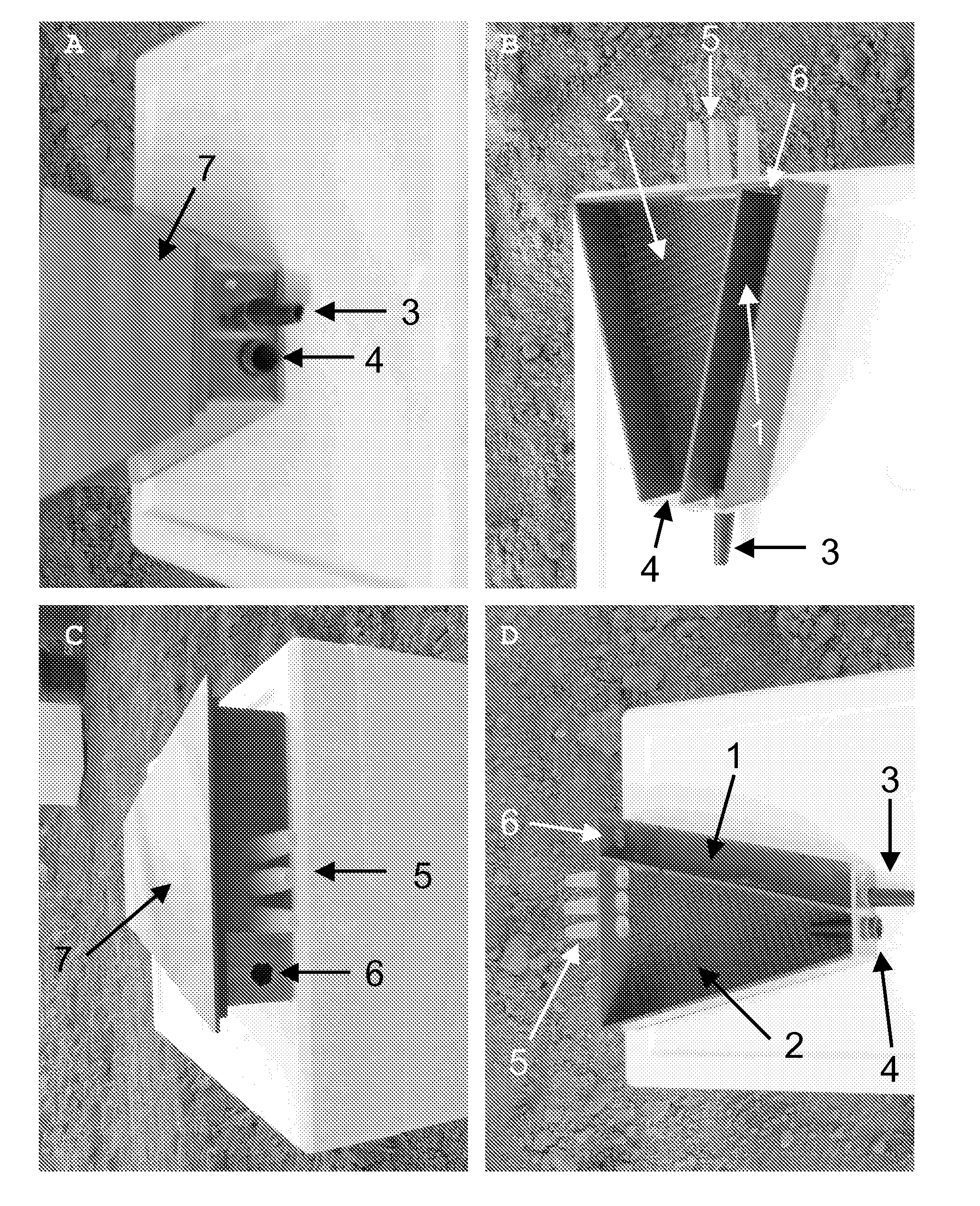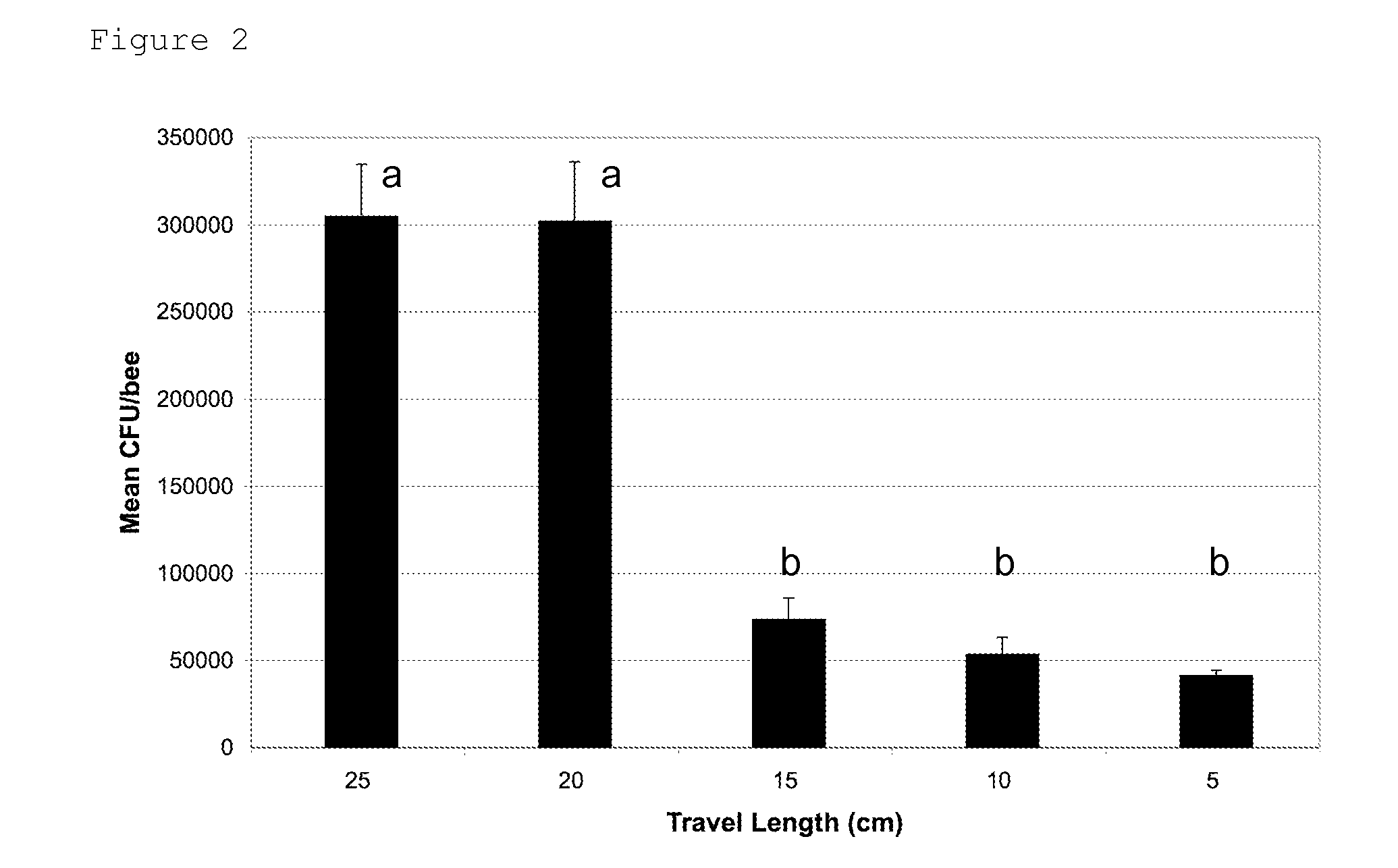Hive-mounted disseminator device
a disseminator and hive technology, applied in the field of disseminator devices, can solve the problems of no longer suitable for bee loading, no longer efficient in separating outgoing and incoming bees, and the rapid diminishing of the load of bees leaving the hives
- Summary
- Abstract
- Description
- Claims
- Application Information
AI Technical Summary
Benefits of technology
Problems solved by technology
Method used
Image
Examples
example 1
Funnel-Dispenser
[0062]In all of the experiments with the F-dispenser the MCA consists of seeds / propagules of the Fungi strains Trichoderma atroviride and Hypocrea parapilulifera at a minimum concentration of 1,000,000 CFU (Colony Forming Units) / gram. This MCA is for example available under the Commercial product name BINAB® T Vector (Bio-Innovation AB, Sweden). However, any control agent, which does not interfere with the bees to perform normally, could be used.
[0063]Funnel-Dispenser Design
[0064]The Funnel-dispenser (F-dispenser) has the following characteristics (FIG. 1):[0065]It is a two-way dispenser with a trapezium basis, made of 3 mm thick PVC, with a separated exit and entrance compartment ((2) and (1), respectively)[0066]The trapezium basis has a width of 7.2 cm to 18 cm[0067]Compartment (2), is filled with the MCA, is 5.3 cm high, from about 7.0 to 14.0 cm wide and from about 20-30 cm long. This compartment contains one opening (4) that is connected with the nest via a shor...
example 3
Evaluation of the Effect of the Superimposed (S)-Dispenser on Foraging Activity in Outside Conditions
[0105]The purpose of this experiment was to assess the effect of the presence of the filled S-dispenser, on the foraging activity of bees in outside conditions. Also, a modified S-dispenser was tested. This, called ‘3 valves S-dispenser’ differed from the S-dispenser by featuring a third valve between the dispenser chamber and the nest (see FIG. 10), to preclude loaded bees to return to the nest. Each dispenser type was tested in three replicates, each containing one queen and about 50 workers. The control group consisted of 3 regular bumblebee hives. The hives were placed in a row outside alternatingly. At day zero the dispensers were mounted in regular hives and filled with Maïzena to mimic the presence of a powder formulation. After 5 days, the dispensers were refilled and countings of 30 minutes were done at 10 AM and 2:30 PM. Countings were repeated at day 5, 7 and 9 at 10 AM a...
PUM
 Login to View More
Login to View More Abstract
Description
Claims
Application Information
 Login to View More
Login to View More - R&D
- Intellectual Property
- Life Sciences
- Materials
- Tech Scout
- Unparalleled Data Quality
- Higher Quality Content
- 60% Fewer Hallucinations
Browse by: Latest US Patents, China's latest patents, Technical Efficacy Thesaurus, Application Domain, Technology Topic, Popular Technical Reports.
© 2025 PatSnap. All rights reserved.Legal|Privacy policy|Modern Slavery Act Transparency Statement|Sitemap|About US| Contact US: help@patsnap.com



